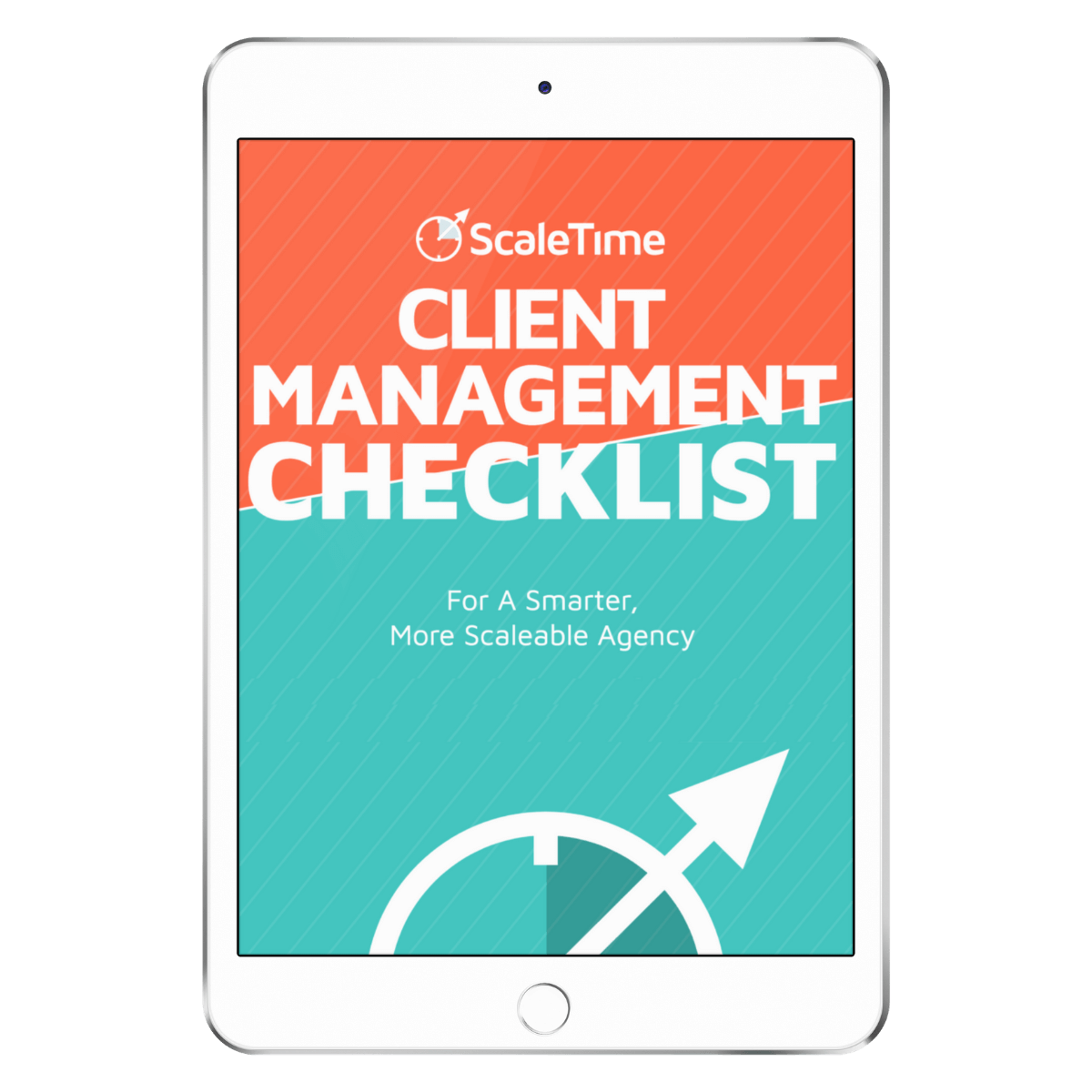It's a Friday afternoon — everyone's excited to go home for the weekend. Including you. You can finally put your fun plans into action.
But wait.
Suddenly, some unfinished task makes it way to your desk, and there's no time left! You've got no choice but to work overtime. You hear a giant sucking sound — your weekend plans going down the drain.
Ugh. If only you'd prioritized that project sooner!
It's a common, and unfortunate, scenario in the workplace. We get occupied with other tasks without realizing that we've forgotten something, something a little too important to forget.
The good thing is that these recurring memory-hole mishaps are solvable — we just need to find an organizational method that works.

So, how can we ensure we've done all our necessary work before the weekend?
No special tools required. It's really simple. You might've even used it for other things.
A checklist!
There's no need to reinvent the wheel. The trusty old checklist is all you. Use it to jog your memory to prevent errors, especially when it comes to repetitive tasks, ensuring consistency and completion.
As tasks increase, we want all processes to run smoothly without mistakes or interruptions, even if the team is stressed, tired, or distracted. Enter the project management checklist. These lists promote project manager diligence, and ensure tasks are done in order.
Want to create a checklist for your agency? Continue reading to get the most out of this tool.
How Do I Know Checklists Won’t Waste My Time?
Checklists are our companion in day-to-day work. We commonly use them to organize our tasks by priority, allowing us to track progress and check off our to-do's. A checklist also lets us move timeframes around and edit tasks as needed.
We commonly use a spreadsheet, software, or even just pen and paper to create and work through checklists. There's no rule about how to document checklists, as long as it's accessible and understandable for those who need it.
But, what really makes a good and effective checklist?

The checklist design can be simple and will vary according to your needs and tasks. According to Atul Gawande in The Checklist Manifesto, a good and effective checklist is easy to read and follow. Think K.I.S.S— keep it short and simple:
- No more than nine items on the checklist
- Everything should fit on one page
Once you've created a checklist, edit it for:
- Clarity: Your checklist should clearly communicate team members’ duties and set expectations.
- Accountability: The checklist must assign responsibilities to each team member, reducing errors and promoting problem-solving.
- Efficiency: A comprehensive checklist streamlines team workflows, saving time and ensuring seamless task transitions.
A great example of an effective checklist is the World Health Organization's WHO Surgical Safety Checklist. It outlines what the surgical team must do before and after a procedure to ensure patient safety and reduce adverse events. In healthcare facilities that have implemented it, use of the checklist has reduced surgery fatalities by as much as one-third.

ScaleTime Recommends: What Checklist Template to Use?
The checklist we use depends on our needs and projects. Below are the most common checklist templates project managers use to increase efficiency and productivity.
To-do list
A to-do list is a simple yet powerful tool for managing projects, making it the foundation of effective task management.
Using this type of simple checklist prevents bandwidth overload, since it identifies urgent and important tasks, keeping us focused.
When making a to-do list, we create a list of tasks in one place, say on a spreadsheet or sheet of paper. Doing this helps us prioritize and determine which specific tasks should be done and in which order according to identified factors. It's important that we keep a well-structured and thought-out list for it to be effective.

By using a to-do list, we'll be more organized and more reliable since we're more likely to remember important tasks. We'll be able to focus our time and effort on high-value activities, making us more productive and more valuable.
In short, a to-do list helps us manage our workload, avoiding procrastination!
5W1H checklist
Our next recommendation requires comprehensive planning to be effective — the 5W1H checklist.
This type of checklist uses a questioning approach to solve a problem by answering: what, who, when, where, why, and how:
- What? This clearly describes our situation or the specific problem we're solving. It explains the purpose of the method usage and describes our overall goal.
- Who? This refers to the team involved in the situation, particularly members who're responsible for discovering and solving the problem. And those who'll implement the solution.
- Where? This specifies the location for the issue, whether it's a facility or a certain process.
- When? This includes all relevant dates, such as the timeline, deadline, duration.
- Why? Explains the reason and objective in detail. By asking why, we uncover the root cause of the situation and implement action plans for prevention.
- How? This describes in detail the method and steps in carrying out the identified action plan, including resources and expenditures.

As we ask questions, we gain an in-depth analysis of the problem, allowing us to view it from different perspectives. We can also emphasize important information about our agency, allowing us to systematically structure our thoughts.
This allows us to comprehensively plan our actions, which can also help us recognize potential issues and possible solutions.
RACI matrix
A RACI matrix maps every task, milestone, or key decision in the project completion process. The matrix identifies all stakeholders in the project, according to the following template:
- Responsible: Determines the people directly responsible for the task and creates the deliverable. Responsible persons can be one or many, depending on the specific task.
- Accountable: Identifies the individuals delegating and reviewing the work published, normally the project manager. The manager ensures those responsible are aware of the expectations and that work is completed on time.
- Consulted: These individuals provide input and feedback on the work and are usually affected by the project's outcome. They can be the client or other teams.
- Informed: These are people looped into the project's progress. We keep them aware of what's going on as it could also affect their work. Informed people can be the senior leadership in the agency.
When we know who is who in the project, we can easily reach out to the proper individuals should we have concerns. This allows the effective flow of communication within the agency and avoids misunderstandings throughout the project duration.
A RACI matrix also promotes accountability in our work. When things go south, knowing who is directly involved in the project makes taking the necessary actions (or sanctions if serious issues arise) easier!
Pro Tip: Build & Personalize Your Checklist
Creating an effective checklist may seem difficult, but it isn't! We only need to determine the essential project parts, particularly the following:
Tasks and sub-tasks
The first thing we need to identify are the tasks we need to complete. These cover the necessary steps to create the deliverables, and any additional sub-tasks required for completion.

Identifying the tasks and sub-tasks in our projects will provide us clarity we need for project success.
Priorities and deadlines
Now that we know what we need to do, we should determine when we need to do it.
Setting a deadline for each task allows us to prioritize our tasks and sub-tasks. Ask these questions to get started:
- How urgent is the task?
- Is it highly important?
Carefully prioritizing tasks results in faster, more thorough project completion.
Roles and responsibilities
Next up is delegating.

We can look at members' skill sets and availability when assigning roles and responsibilities for each task. This will help us assign the right tasks to the right people at the right time.
Necessary details
Project members can't fulfill their roles based on assumptions. So, it's important to include all the necessary details when assigning work.
Some of these include:
- Resources: Creating quality deliverables requires thorough research. We should include resources that can help members do their jobs well, such as relevant or similar previous projects and other reference materials. This way, we can make informed team members who can create satisfactory deliverables.
- Dependencies: Some project tasks rely on the input (or output) of team members or managers. Include any dependency in your personalized checklist so members can follow up with them, allowing for a smooth and efficient process.
Now, Time to Maximize!
Here's our expert advice on how you can master project optimization with your checklist and stay on track:
- Consider a customizable template. Checklists vary according to needs and objectives, but these follow simple outlines. Use a template considered right for the current needs and add (or remove) certain aspects as necessary. Just remember to align the checklist according to each project's unique requirements.
- Review and update regularly. As we scale the agency, our needs change. It's important that we regularly review our checklists to see if they're still aligned with our objectives. If not, update as needed.
- Ask for feedback. A checklist is a quality management tool, meaning managers create it and apply it to project members. It's best to ask for feedback from those who actually use it, that is, the project members, to determine its usability and effectiveness.
- Communicate updates. Keep the whole team in the loop of any updates in the checklists. After all, they're the ones who'll use the checklist the most.
- Leverage technology. Gone are the days when we keep documents on paper only. Use technology to your advantage and use project management tools and software in creating checklists. See your team get updated in real time and boost their productivity!
Keep these tips and tricks in mind for building your checklist and see your productivity soar.

Key takeaways for building your efficiency-boosting checklist
In a nutshell, a checklist helps project teams to manage their workload and prevent procrastination. It diverts our attention to necessary tasks, even in a stressful and distracted environment.
- An effective checklist is short and simple. It only contains all the necessary information regarding tasks and projects.
- When important details are included in a checklist, we can provide clarity for the members assigned to the task, avoiding any misunderstanding and error in the process and therefore, saving precious time and effort.
- Checklists vary according to the needs and projects of an agency. However, commonly used checklists for effective project management include to-do lists, 5W1H checklists, and the RACI matrix.
- Each checklist aims to address the specific factors and issues. So, we need to carefully evaluate which is the right checklist for a specific project.
- Creating an effective checklist requires steps. These mainly involve identifying the project's needs and objectives, tasks and sub-tasks, and key stakeholders.
Ready to turn those project to-dos into ta-das? Download the project management checklist and watch your agency morph into a dynamo.




















%20(1).gif)
